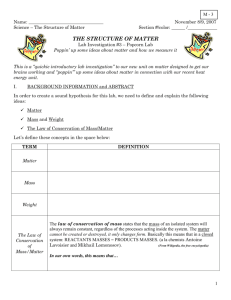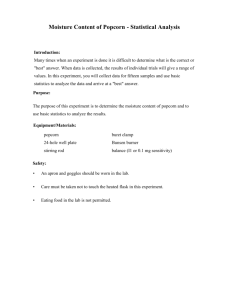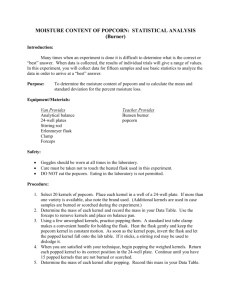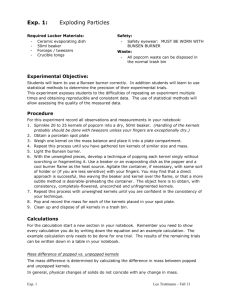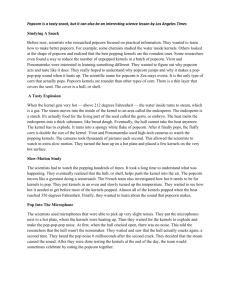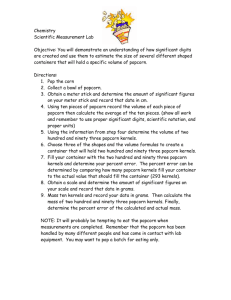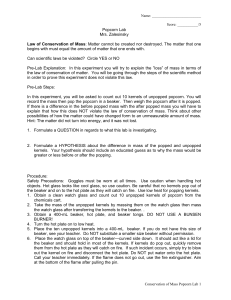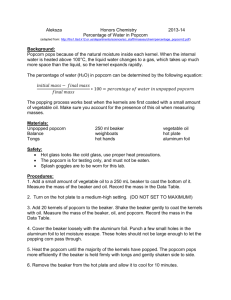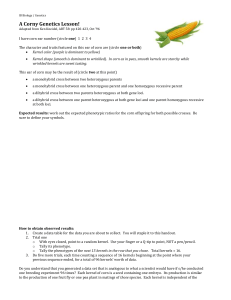POPCORN LAB (% WATER) - WA
advertisement
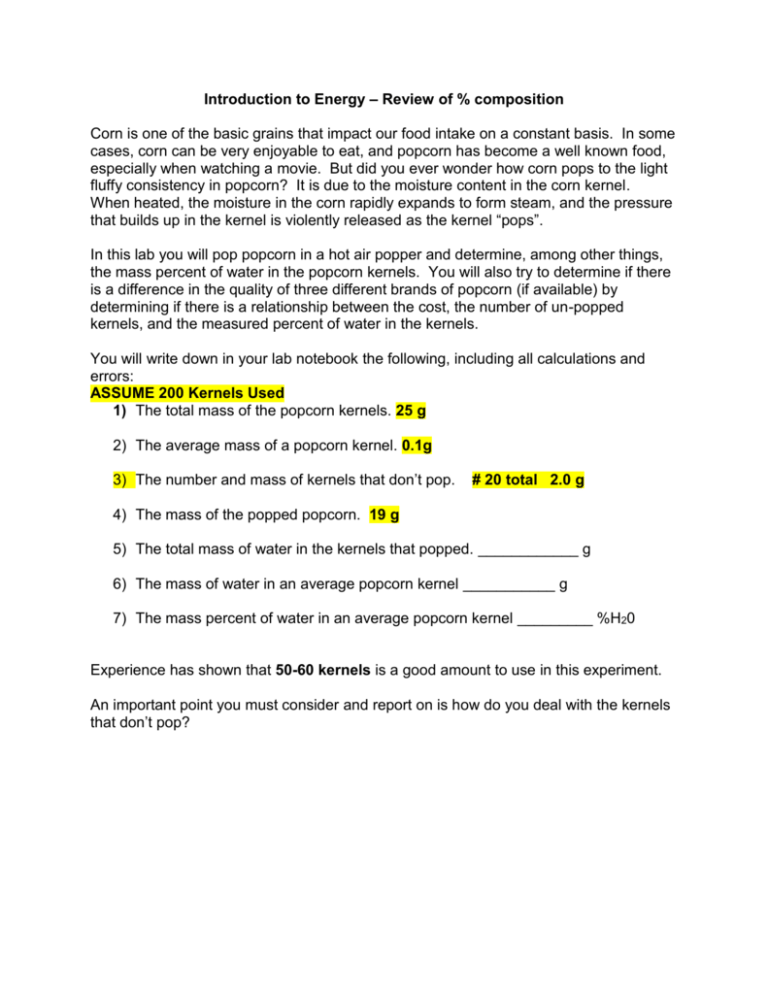
Introduction to Energy – Review of % composition Corn is one of the basic grains that impact our food intake on a constant basis. In some cases, corn can be very enjoyable to eat, and popcorn has become a well known food, especially when watching a movie. But did you ever wonder how corn pops to the light fluffy consistency in popcorn? It is due to the moisture content in the corn kernel. When heated, the moisture in the corn rapidly expands to form steam, and the pressure that builds up in the kernel is violently released as the kernel “pops”. In this lab you will pop popcorn in a hot air popper and determine, among other things, the mass percent of water in the popcorn kernels. You will also try to determine if there is a difference in the quality of three different brands of popcorn (if available) by determining if there is a relationship between the cost, the number of un-popped kernels, and the measured percent of water in the kernels. You will write down in your lab notebook the following, including all calculations and errors: ASSUME 200 Kernels Used 1) The total mass of the popcorn kernels. 25 g 2) The average mass of a popcorn kernel. 0.1g 3) The number and mass of kernels that don’t pop. # 20 total 2.0 g 4) The mass of the popped popcorn. 19 g 5) The total mass of water in the kernels that popped. ____________ g 6) The mass of water in an average popcorn kernel ___________ g 7) The mass percent of water in an average popcorn kernel _________ %H20 Experience has shown that 50-60 kernels is a good amount to use in this experiment. An important point you must consider and report on is how do you deal with the kernels that don’t pop? STEPS TO FOLLOW: 1. Obtain a clean, dry beaker and add ~5-10ml of oil to the bottom of it (watch me). 2. Place the beaker (with the oil) on the analytical balance and determine the mass. 3. Add ~100 kernels to the empty beaker (it doesn’t need to be 100, but you do need to know how many of them you have). 4. Get the mass of the beaker and the kernels (now you can get the mass of the kernels). 5. Set up a ring-stand, Bunsen burner, pipestem triangle and set up accordingly. 6. Place a small piece of aluminum foil over the top of the beaker. 7. Place the beaker near the heat source. However, make sure you do not have the beaker directly in the hottest part of the flame. Start away from the flame and move it closer if necessary. You don’t want to burn the kernels. 8. Watch the magic happen. Look for the formation of steam and think about what is happening in this situation. 9. After the majority of the kernels have popped, remove the popped corn onto a clean paper towel for the moment. 10. Count and remove those kernels that did not pop (these numbers go in the data table on the prior page as well). 11. Put the popcorn back into the beaker and determine the mass of the popped corn. 12. With this information, you can then calculate the % of water that is in the popcorn. 13. Show the details of how you determined the % of water in the kernels in the space below. Your final answers should be summarized on the previous page.

